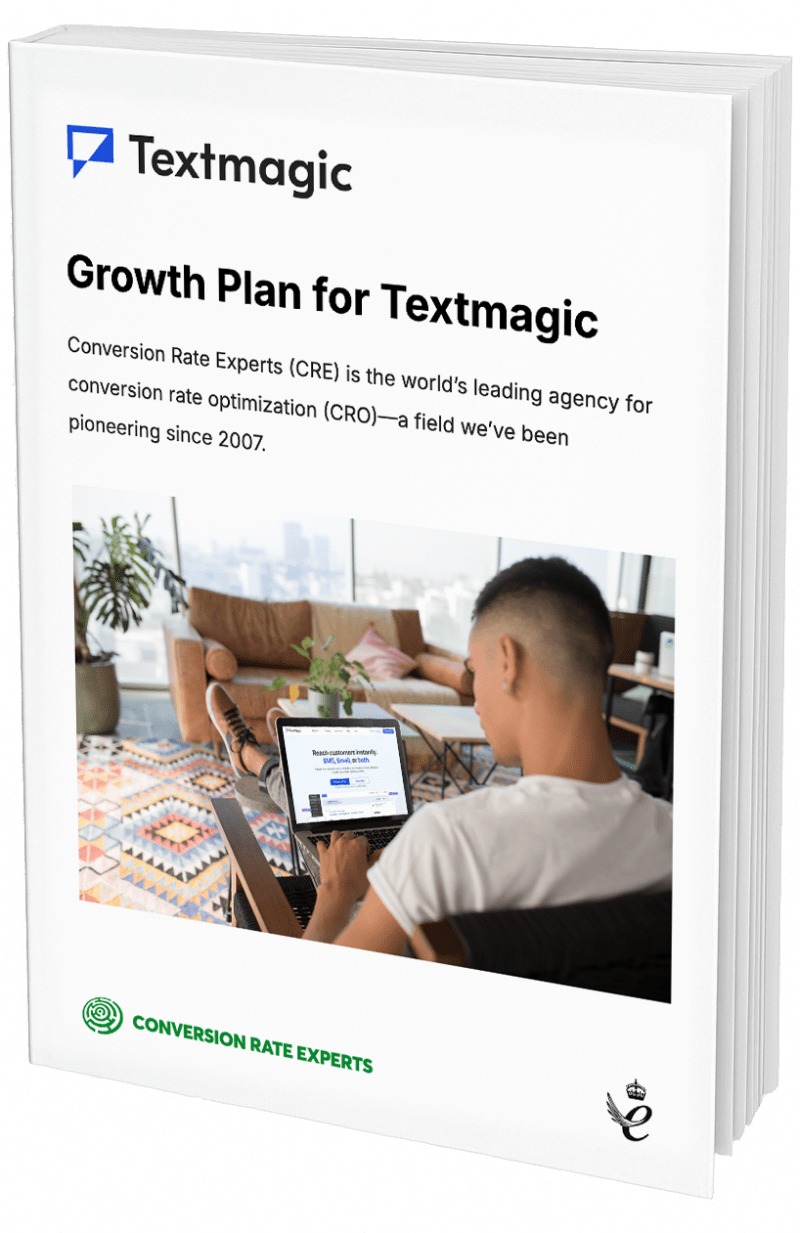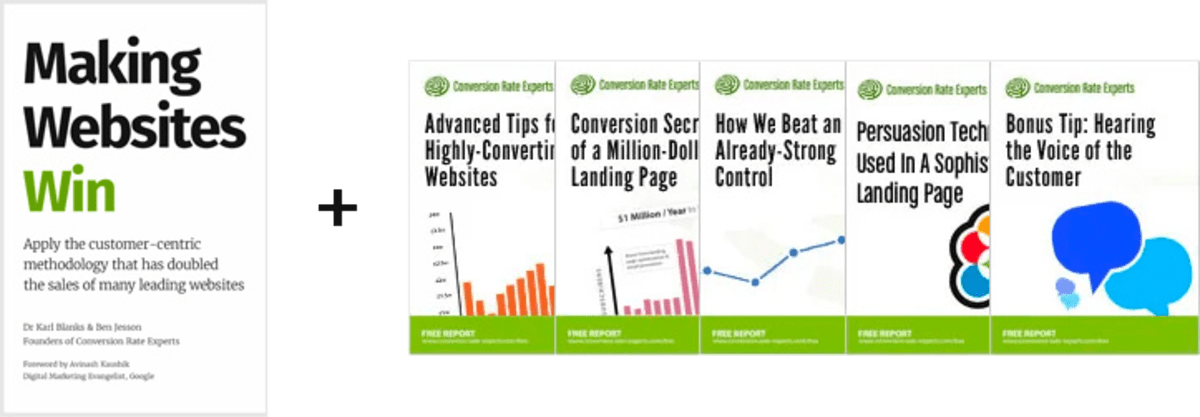Copywriting Friday: Does the world need another cookbook? (Yes.)
Published: October 2025
Copywriting Friday highlights the tools and techniques of persuasive content. Some of the examples may seem dated, but the principles are timeless (and critical for conversion rate optimization). Enjoy.
Clayton Makepeace, legendary copywriter, would sometimes ask a simple question: “Against which wall do you lean your ladder?” That was his way of asking what your unique selling proposition was. He then would say: “And if you’re not at the top of the ladder, find another wall.”
The piece we’re analyzing today does a wonderful job of finding a wall in an exceedingly crowded space. Cookbooks have a long history. Starting around 1700 BC someone had the idea to scratch a recipe onto a clay pot, and it’s gone from there. In the US alone, thousands of titles are released each year, and millions of free recipes are made available online. To some, these statistics might point to hypersaturation; to others, it means an established—and hungry—audience.
A company called America’s Test Kitchen publishes online and print versions of a cooking magazine called “Cook’s Illustrated”. The printed sales letter for Cook’s Illustrated is what we’re examining today, because it’s extremely well done. (You can download the entire PDF if you wish.) Here’s the cover:
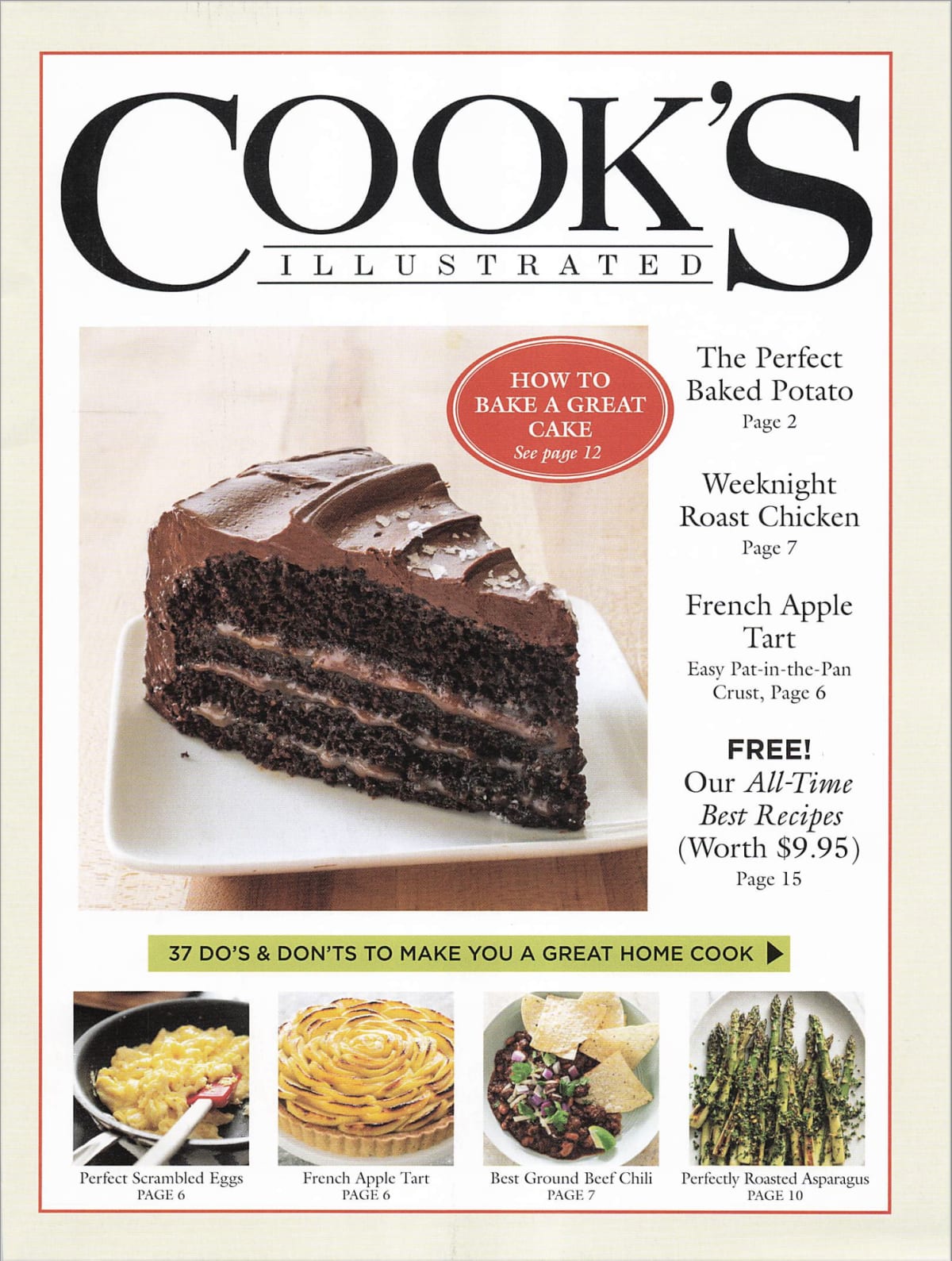
Six persuasion techniques from Cook’s Illustrated (and how to use them)
1. Your first job is to get them to read more
This is not a new idea, but so few companies do it well. It’s more common to focus on littering “Buy Now” buttons on a homepage than on engaging readers so they want to go deeper into the material. If you do a great job of building desire, people will move heaven and earth to buy from you. If you don’t, then no amount of calls to action will matter.
The Cook’s Illustrated cover above has no fewer than 10 reasons to read on, like “Perfect Scrambled Eggs—Page 6”. Does your website display anything “above the fold” (before you scroll) such that people are intrigued and need to scroll or click to find out? It could be a new offering, a special report you’ve created, or some other type of news.
Engage first, and the sales will come.
2. Activate the image part of their brains
When babies are born, their most-developed sense is smell, but for most of our lives, the eyes are central. As much as we copywriters adore words, those squiggles need to be decoded to make sense. On the other hand, these pictures need no decoding at all:

The Cook’s Illustrated letter takes full advantage of imagery. Every single one of their readers knows what an egg and a potato look like, yet they show them:
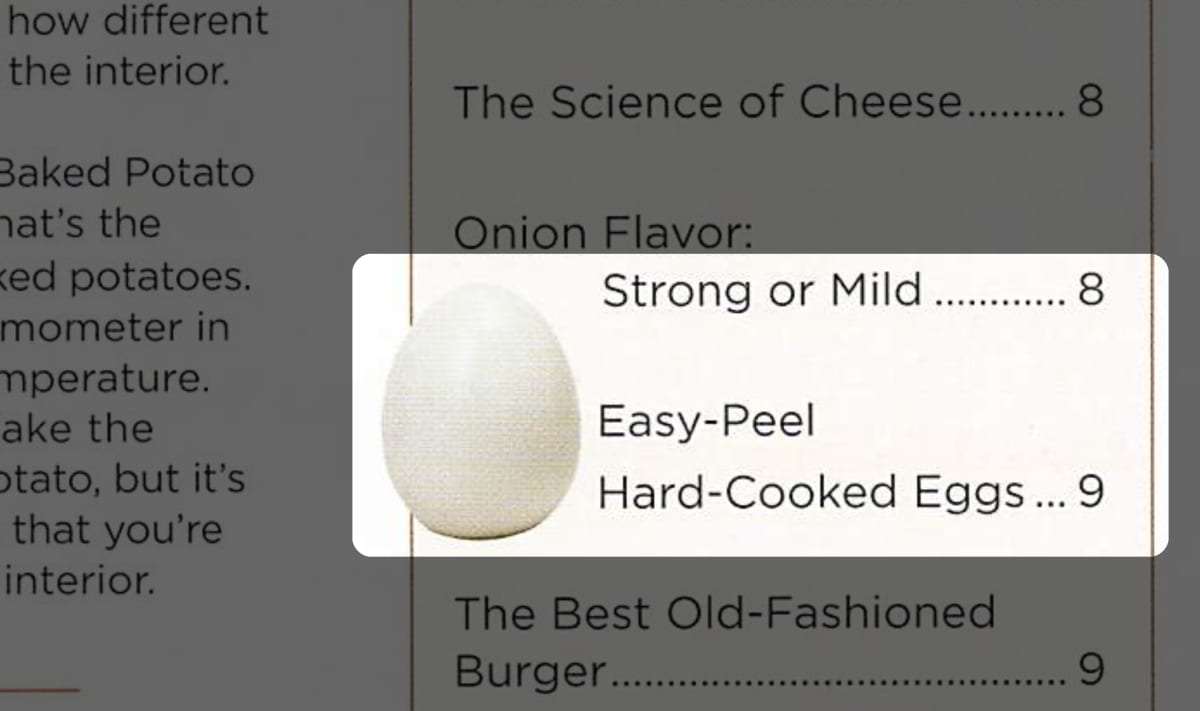
Reinforcing text with what might seem like superfluous images can accomplish two things:
- It can entertain. When you squint at a Cook’s Illustrated page, it may have lots of text but it doesn’t feel like work to dive into the topics.
- It helps to explain. You can craft lots of words to get your point across about how a potato cooks, or you can show it. You still might describe things in words, but they complement the images.
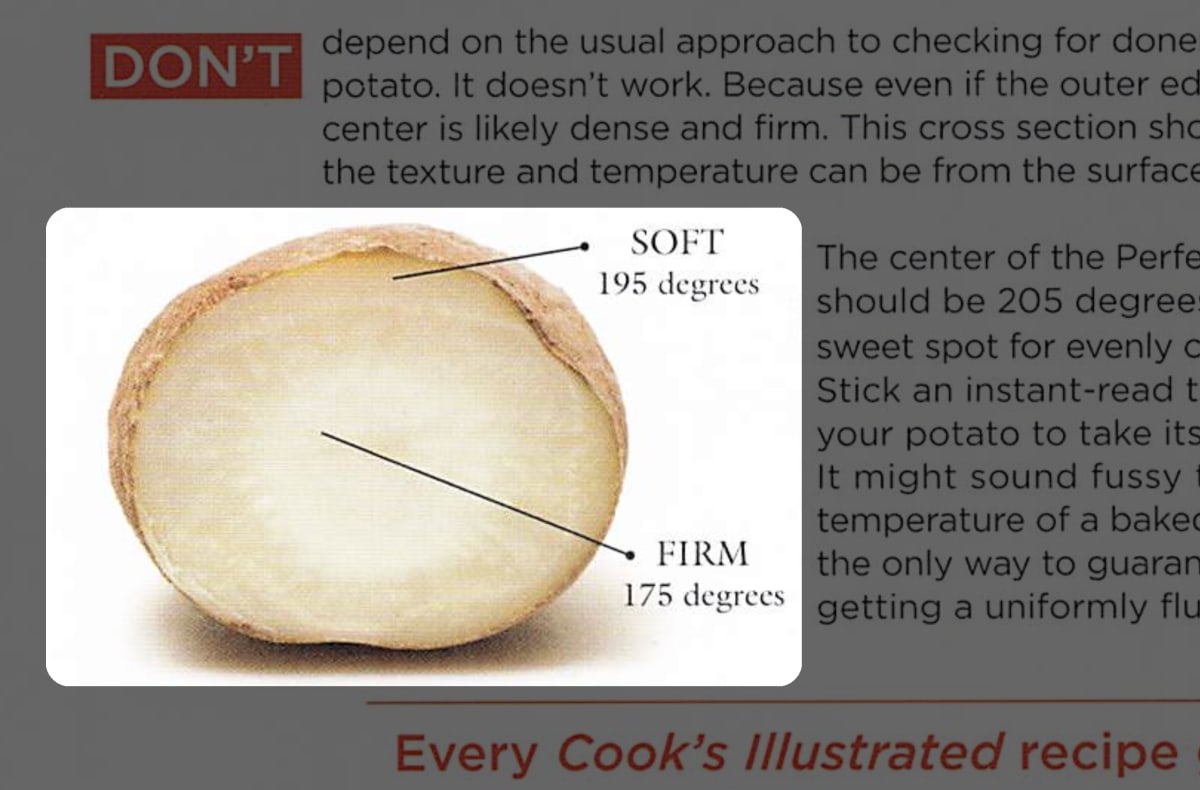
3. What can you demonstrate on your site?
This is another way to activate that image highway in your brain and it’s so powerful, it deserves more emphasis. Looking at these two salad dressings, the images do most of the convincing:

Though some products may readily lend themselves to demonstrations, many other products and services can be demonstrated after giving the matter a little thought:
- Demonstrate how a particular cloth or coating is far more durable than the budget—or even the expensive—alternatives.
- Document the laborious process that someone previously needed to follow in order to set up meetings, and how that led to founding a company with an automated system.
- Show a video of how your software has finished processing while the alternative is taking forever.
Joe Ades is not a household name, but he’s a master at demonstrating. His product was a simple Swiss vegetable peeler, but he sold enough of them to afford a Manhattan townhouse.
4. Cast a wide net the right way
There’s often tension between wanting to cast as wide a net as possible for customers versus being laser-focused on one segment. The Cook’s Illustrated letter uses a method that works for both audiences by using images that instantly direct your attention to what you prefer.
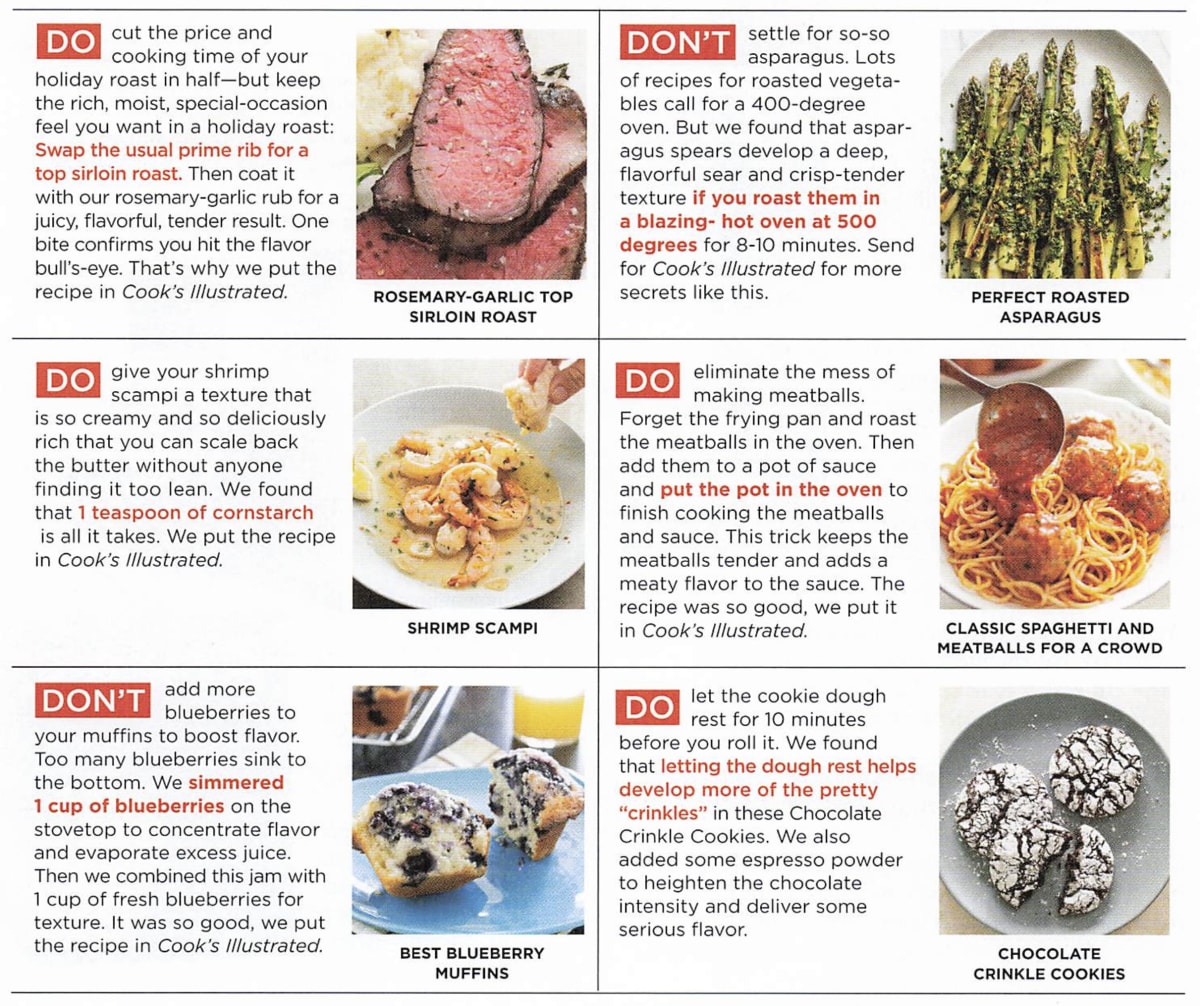
There’s something on this page for vegans, hardcore carnivores, and pescatarians, making it easy to find what you’re interested in. The company also takes advantage of deep-dive segmenting in the form of dedicated cookbooks about fish, meat, and so on, but that will come later—for now the goal is to get engagement, and then a trial subscription.
How might you use images to make your different segments know exactly where to look?
5. Surprise your readers
One of the strongest mechanisms running through this package is that of surprise:
- Wait. You cooked 400 potatoes to learn the best way?
- Molasses prevents salad dressing from separating?
- The winner of your taste test was a $3.49 balsamic vinegar over a $13.99 competitor?
- Run a pie crust under water? What?
Not only does surprise make you want to read more, but it gives you something interesting to tell others.
The manufacturer of coffee grinders, Baratza, makes a point of talking up how you really should try to repair your grinder instead of throwing it out and buying a new one. Patagonia is famous for doing the same thing.
You can use this method in your own business. If you sell a SaaS solution, surprise people by describing a use case where the lowest-cost solution—or even a free one—will work just fine. That instantly makes you more of a trusted advisor compared to companies that don’t come across as watching out for your bank account.
6. Pass the Iceberg Test
Cook’s Illustrated leaves you with the impression that “there’s way more where that came from”:
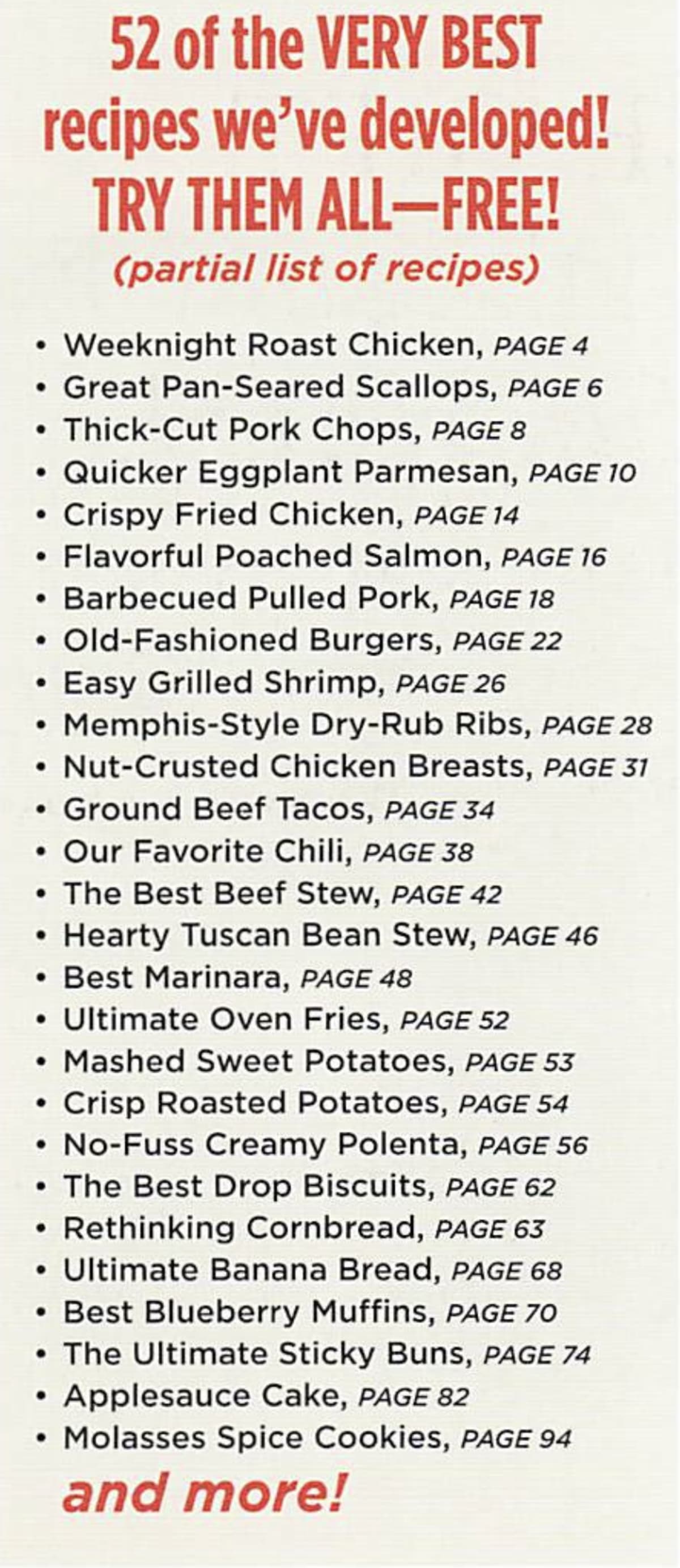
Not only will you get a ton of value for your trial subscription, but it’s coming from a substantial organization. They reinforce that impression by mentioning how they have 48 cooks and food scientists on staff. The one word to describe the overall impression is—deep. Like an iceberg.
Do you leave your visitors feeling like you don’t have a lot of social proof? This can happen when you see only a handful of testimonials, and sometimes even those are repeated on the site. If you do have the resources, you want to leave them thinking: Wow, there’s a lot more than I can even process.
For years we have used this concept at Conversion Rate Experts. Could we make our point by having a couple of dozen testimonials and a similar number of articles on our site? It would have been easier. Instead, we want visitors to sense the size of that iceberg, even if they only choose to view a fraction of our enormous number of testimonials and articles.
Look over your own site: How large does that unseen-part feel that relates to your experience, use cases, client list, and so on?
A mindset switch that can really pay off
It’s easy to read this and think: I now know what to do if I ever sell recipes, but my business is entirely different. A more profitable mindset is to think: What can I borrow from this business and adapt it to my situation?
In addition to the six approaches we just covered, you might be able to borrow many more elements. For example:
- The “Do/Don’t” Construction. If you’re delivering genuinely useful tips, you will increase engagement and trust.

“It was so good, we put the recipe in Cook’s Illustrated.” What a great sentence. How might you borrow that phrase? “It was so durable, we added it to our regular lineup.”
Give immediate value before you ask for money. Are they better off for having read your webpage and learned something they can use, whether they buy or not?
As excellent as the Cook’s Illustrated piece is, they didn’t invent the overall format. Copywriters will notice similarities to the approach Boardroom Reports successfully used for years. Then again, Boardroom was likely influenced by earlier legends like Robert Collier and John Caples.
Brilliant approaches to persuasion are all around us, ready to be adapted to work for us once again.
See you next time on Copywriting Friday.
How much did you like this article?
What’s your goal today?
1. Hire us to grow your company
We’ve generated hundreds of millions for our clients, using our unique CRE Methodology™. To discover how we can help grow your business:
- Read our case studies, client success stories, and video testimonials.
- Learn about us, and our unique values, beliefs and quirks.
- Visit our “Services” page to see the process by which we assess whether we’re a good fit for each other.
- Schedule your FREE website strategy session with one of our renowned experts.
Schedule your FREE strategy session
2. Learn how to do conversion
Download a free copy of our Amazon #1 best-selling book, Making Websites Win, recommended by Google, Facebook, Microsoft, Moz, Econsultancy, and many more industry leaders. You’ll also be subscribed to our email newsletter and notified whenever we publish new articles or have something interesting to share.
Browse hundreds of articles, containing an amazing number of useful tools and techniques. Many readers tell us they have doubled their sales by following the advice in these articles.
Download a free copy of our best-selling book
3. Join our team
If you want to join our team—or discover why our team members love working with us—then see our “Careers” page.
4. Contact us
We help businesses worldwide, so get in touch!
© 2025 Conversion Rate Experts Limited. All rights reserved.

